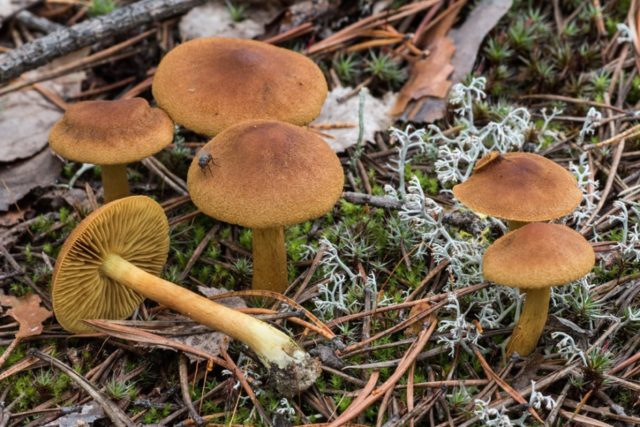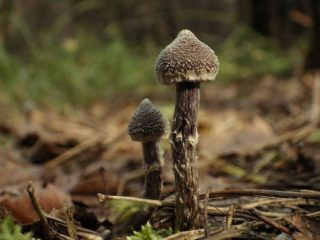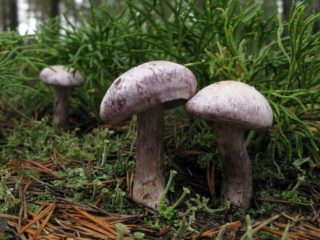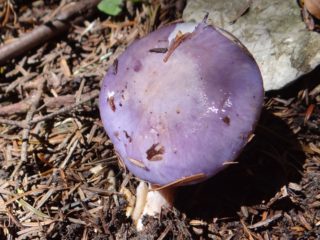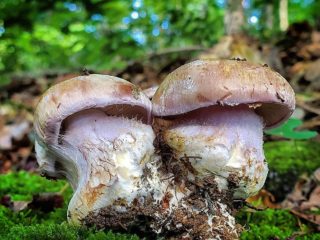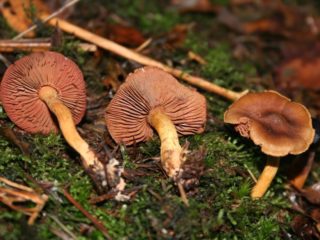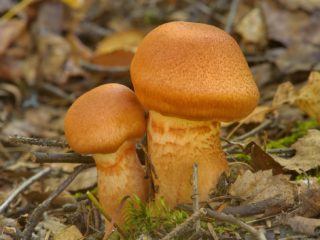Content
The brown webcap is a mushroom from the webcap genus, the Kortinariev family (Webcap). In Latin - Cortinarius cinnamomeus. Its other names are cinnamon, dark brown. All cobwebs have a characteristic feature - a "cobweb" film, which connects the leg and cap in young specimens. And this species is called cinnamon for an unpleasant smell that resembles iodoform.
Description of the brown webcap
The fruit body is brown with an olive tint, hence the names "brown" and "dark brown".
Description of the hat
The fungus is widespread, but little known. Experienced mushroom pickers can recognize the brown webcap from the photo and description. Its cap is small, on average 2 to 8 cm in diameter. It is conical in shape, sometimes hemispherical. Over time, opening, flattens. In the central part, a sharp or wide tubercle becomes more noticeable.
The surface of the cap is fibrous to the touch. Has a yellow cobweb blanket. The main color has various shades of brown: reddish, ocher, olive, purple.
The fungus belongs to the lamellar section. Its plates are wide and frequent, have a yellow-orange tint in young mushrooms and rusty-brown in old ones, after the maturation of the spores. The plates are attached to the pedicle with a tooth. The flesh is yellow-brown, odorless.
Leg description
The stem is fibrous, in the form of a cylinder or slightly widening towards the base of the cone. Often covered with the remains of a cortina, or cobweb blanket, or a whitish mycelium.
Where and how it grows
The cinnamon webcap grows in temperate climates. It is found on the territory of Western European countries such as Germany, Denmark, Belgium, Great Britain, Finland, as well as in the eastern part of Europe - in Romania and the Czech Republic, Poland and the Baltic countries. There is also a mushroom in Russia. It is distributed in temperate latitudes, from the western to the eastern borders. The area of its growth also captures the areas in Kazakhstan and Mongolia.
It occurs more often singly or in small groups in deciduous forests or among conifers. It is characterized by the formation of mycorrhiza with spruces and pines. Collect hearth bodies in August - September, sometimes until mid-October.
Is the mushroom edible or not
In the composition of the brown webcap there are no toxic substances hazardous to human health. No cases of poisoning were recorded. However, it tastes unpleasant and has a pungent odor. For this reason, it is not eaten and is classified as inedible.
Doubles and their differences
Many representatives of the Spiderweb genus are similar to each other and outwardly resemble toadstools. It is difficult to determine exactly which species a particular mushroom belongs to. Only specialists can do it.It is necessary to collect such specimens with great care, but it is better not to do this at all.
The brown webcap is easy to confuse with the saffron webcap. This mushroom is inedible. Its characteristic difference is in the color of the plates and young fruit bodies. They are yellow, while in the brown spider web they are closer to orange in color.
Conclusion
The brown webcap is not of interest for mushroom pickers and cooks. Having met him in the forest, it is better to give up the temptation to put a mushroom in a basket. However, he found another application - in the manufacture of wool products. The brown webcap is one of the few species used as a natural dye. With its help, the wool is given beautiful dark red and burgundy shades.


